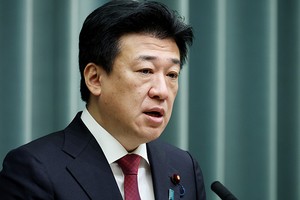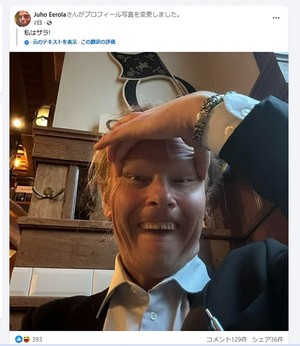By YU IWASA/ Staff Writer
December 24, 2024 at 07:00 JST
XIAMEN, China—Japanese soccer fans may find familiar faces on the sidelines of games in China’s football leagues.
Chinese soccer officials have for years looked for overseas talent to raise the skills of domestic players.
Now, they are hoping to absorb the coaching know-how from Japan, which has become a regular World Cup participant.
The two countries, in fact, are rivals for an Asian spot at the 2026 World Cup. In Xiamen, Fujian province, on Nov. 19, they played against each other in the third round of Asian qualifying for the World Cup tournament.
Japan defeated China 3-1.
During the qualifiers for the under-17 Asian Cup in October, China managed to draw with South Korea on the final day and clinched a berth in next April’s finals.
The Chinese players were led by Kenichi Uemura, a previous member of Japan’s national team.
After retiring as player, Uemura, 50, coached youth academies for Kamatamare Sanuki, a J3 team in the J.League, and for a Chinese football club before he was appointed head coach for China’s under-16 national team in February this year.
In April, Bin Ukishima, a former head coach for Shonan Bellmare, a J1 team in the J.League, was named coach of the Chinese under-15 national team. Ukishima, 57, had also long been instructing youth players.
“It would have been inconceivable in earlier years for Japanese to be hired as head coaches for China’s U15 and U16 national teams,” said an official with the Japan Football Association.
Gao Sheng, who previously coached in the youth academy for J1 team Kawasaki Frontale, is among youth development officials with the Chinese Football Association, which assigned the Japanese to the posts.
“There is respect in China for Japan’s soccer circles,” said Takashi Rakuyama, a former J.Leaguer who played in China from 2011 through 2013. “The expectations for Japanese coaches are also rising.”
Rakuyama, 44, has been operating a soccer school for children in Shenzhen, China, since 2014.
One harbinger of Japanese soccer coaches in China is Takeshi Okada, who managed a club in the professional Chinese Super League in 2012 and 2013.
Okada, 68, had twice led the Japanese national team at World Cups.
In the backdrop of the attention on Japanese coaches are the doldrums facing China’s soccer circles.
Domestic soccer leagues were very lively in China during the 2010s.
With abundant financial resources, different clubs could acquire top international players, such as Didier Drogba, a former forward for the Ivory Coast national team, and Paulinho, a former midfielder for Brazil.
China began to show its strength within Asia. Guangzhou Evergrande, predecessor of today’s Guangzhou Football Club, won the AFC Champions League title in 2013 and 2015.
But the level of play did not rise on the Chinese national team, likely because of the country’s over-reliance on foreign players.
The situation was much the same for coaches.
Chinese soccer officials invited famed managers from abroad to coach the national team, including Marcello Lippi, who led Italy to the World Cup title in 2006.
Certain Chinese clubs hired high-salaried foreign coaches from Europe to serve in their youth academies.
Domestic coaches, however, were slow to develop.
As a result, young Chinese players struggled to improve, and national teams for youth age groups also failed to achieve the desired results.
Rakuyama said he believes young Chinese players have outstanding physical ability and skills. But they are “used to waiting for instructions from grown-ups and are not good at thinking for themselves to work out strategies.”
At his school, Rakuyama has introduced a training method that uses bibs of five colors, drawing on the method of Ivica Osim (1941-2022), the former Japanese national team head coach.
Rakuyama himself received Osim’s instructions when he played for JEF United Chiba in the J.League.
The flexible teaching methods of well-experienced Japanese coaches and their calls to players to make decisions for themselves have been well-received in China, Rakuyama said.
Nearly 10 years have passed since Chinese President Xi Jinping set a national strategy goal of turning his country into a “soccer power” and spelled out a plan for reforming China’s football.
The country has since taken such measures as enrolling foreign-born athletes on the Chinese national team after having their citizenships changed.
Still, China has only qualified for one World Cup, the 2002 tournament co-hosted by Japan and South Korea.
Opportunities, however, have broadened.
The 2026 World Cup to be co-hosted by the United States, Canada and Mexico will involve 48 teams, up from 32, including a maximum of nine from Asia, up from five.
The country with more than 1.4 billion people is investing heavily into the future of its soccer programs.
“I am afraid there will still be some time, but the chances of China clinching a berth in the World Cup will hopefully come into view several years from now, when athletes who are now in their teens will be the leading players,” Rakuyama said.




















A peek through the music industry’s curtain at the producers who harnessed social media to help their idols go global.
A series based on diplomatic documents declassified by Japan’s Foreign Ministry
Here is a collection of first-hand accounts by “hibakusha” atomic bomb survivors.
Cooking experts, chefs and others involved in the field of food introduce their special recipes intertwined with their paths in life.
A series about Japanese-Americans and their memories of World War II